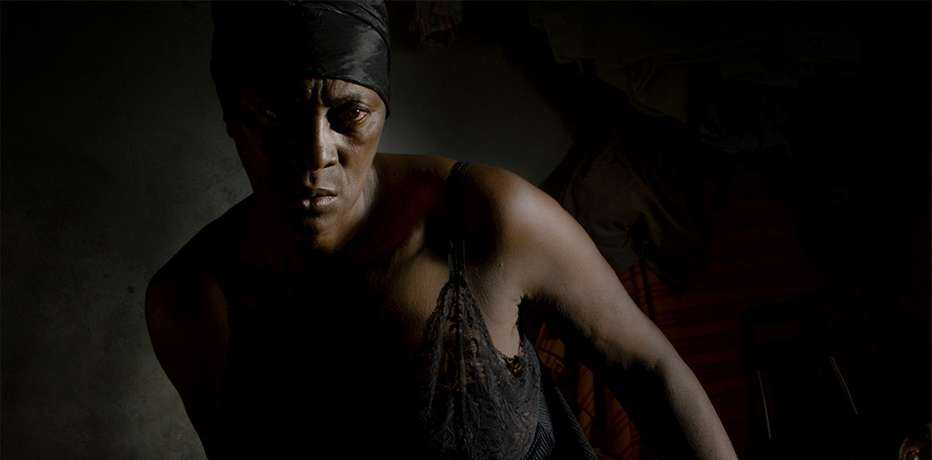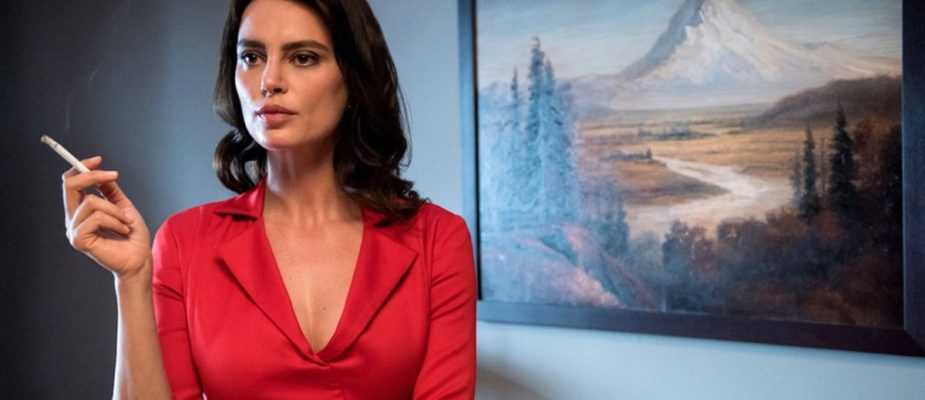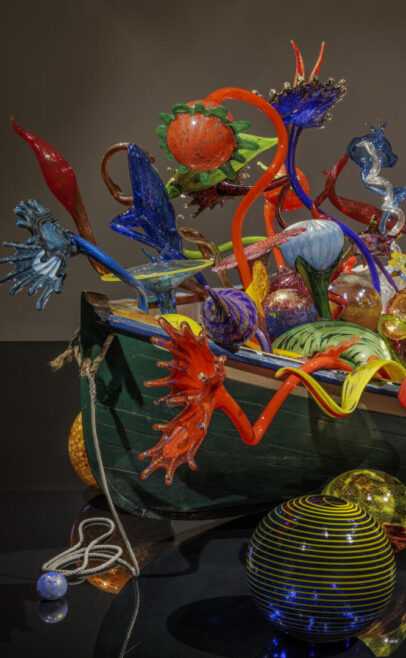With movie theaters shuttered from coast to coast, studios and smaller independent film distributors have been scrambling to rearrange their calendars, leading to numerous high-profile postponements that already stretch into 2021. With many companies (and theaters, like the Noble in Oklahoma City) facing too many titles for what will be, inevitably, a much condensed calendar, the more intrepid of these distributors have begun releasing their spring slate in virtual form. We, at Museum Films, are grateful to these distributors not only for the opportunity to a host a number of screenings where a share of all rentals goes directly to the Museum—watch a movie and support OKCMOA during this uncertain time. We are also ecstatic that they are releasing these films at all, new and very original works that are among the very best that the global art cinema had to offer over the course of the past year.
Premiering last May in competition at the Cannes International Film Festival, the world’s most prestigious art-cinema showcase, The Whistlers (watch here) is the latest fiction feature written and directed by Romanian master Corneliu Porumboiu, whose previous film, the excellent documentary Infinite Football (2018), began its American theatrical run at none other than the Samuel Roberts Noble Theater. Across a decade and a half of fictional and non-fictional films alike—highlights also include Police, Adjective. (2009) and The Treasure (2015; another recent OKCMOA release)—Porumboiu has created a considerable body of work that centers on the experience of duration (or time more generally), Romanian history and the contemporary legacy of bureaucracy, and the nature of language. The last of these provides the subject matter for The Whistlers, the first of the director’s features to be mostly shot and set outside his native Romania.
Employing a 1940’s noir-style flashback structure, one that compares to films like Out of the Past and Double Indemnity, The Whistlers opens on and spends much of its time in La Gomera, one of Spain’s Canary Islands. Bucharest police officer Cristi (Vlad Ivanov) has been dispatched there, in what we will discover is the middle of the story, in order to learn the ancestral whistling language that the local mafia uses to communicate. We are quickly introduced to an other-worldly beauty appropriately named Gilda (Catrinel Marlon), who insists, to Cristi, that what she did in Bucharest was only for the cameras. The Gilda character is an even more explicit reference to classical Hollywood film noir as her name brings to mind one of the most famous roles of another of the screen’s greatest beauties, Rita Hayworth, in Charles Vidor’s 1946 noir classic of the same name.
The Whistlers indeed represents Porumboiu’s effort in making a revisionist, classical Hollywood-type romantic thriller, which on the face of it is a tall order from a director whose films are studiously created to be not very thrilling. In Porumboiu’s films, people tend to watch and wait—his irony-laden 2009 masterpiece Police, Adjective. is a great example with its banal, eight-day investigation of a hash-smoking teenager; or alternatively, The Treasure where our heroes spend long hours fruitlessly combing a backyard with metal-detectors in search of buried treasure—and rarely do his films feature romantic story-lines. The Whistlers, in the best sense, feels like a challenge that the director imposed on himself, as well as an opportunity to work in a substantially different mode from the dryly comic art cinema with which he has come to be associated.
What results for Porumboiu, ultimately, is a strongly compelling and sexy anomaly that at the same time still oozes with the tropes and stories that seem to interest the director most, right down to The Whistler’s own version of buried treasure, its hidden-in-plain-sight language, its filmmaker within the film, and even its glimpse of Communist-era Romanian culture. Apropos of the best Hollywood filmmaking, Porumboiu has made this unfamiliar generic territory completely his own.
 Pedro Costa’s Vitalina Varela (watch here), my personal choice for the best world premiere of 2019, and a film that received exactly one screening at the Noble Theater before it closed due to COVID-19, could not be further in spirit or effect from Hollywood filmmaking of any period. Nothing short of a new form of cinema, as much as anything can be, Vitalina Varela, which is the name of the film’s lead actress and co-screenwriter, depicts her character of the same name arriving in Portugal from the Cape Verde Islands three days after her long-estranged husband’s burial. Having waited for her ticket to Lisbon for thirty years, Vitalina insists that she will stay in her late husband’s adopted homeland, despite assurances that there is nothing for her here. The extreme poverty in which she immediately finds herself continually reinforces this fact, though she will also note separately that she and her husband had nothing when he decided to leave her in Cape Verde without warning.
Pedro Costa’s Vitalina Varela (watch here), my personal choice for the best world premiere of 2019, and a film that received exactly one screening at the Noble Theater before it closed due to COVID-19, could not be further in spirit or effect from Hollywood filmmaking of any period. Nothing short of a new form of cinema, as much as anything can be, Vitalina Varela, which is the name of the film’s lead actress and co-screenwriter, depicts her character of the same name arriving in Portugal from the Cape Verde Islands three days after her long-estranged husband’s burial. Having waited for her ticket to Lisbon for thirty years, Vitalina insists that she will stay in her late husband’s adopted homeland, despite assurances that there is nothing for her here. The extreme poverty in which she immediately finds herself continually reinforces this fact, though she will also note separately that she and her husband had nothing when he decided to leave her in Cape Verde without warning.
But back to that name. It is in that name that Costa (Colossal Youth, Horse Money) expresses his subject matter, no less than the name of any portrait sitter communicates the subject of the painting. While in that latter art form, the artist, according to their talent, exercises the latitude to produce an effect that exists somewhere on a continuum between universal type and perfect likeness, the photographic filmmaker only uses exact depiction, with the particularity of the actors (in fiction cinema) then functioning in a narrative context. For Costa, the subject of the film is both the specificity of Vitalina’s appearance and presence, and also her identity, the way that she stands in for the Cape Verdeans living in Portugal’s capital. She makes that community visible, present to the viewer—which may just explain Costa’s reinvention of film art.
The specificity is not just Vitalina’s, however, but also that of her fellow Cape Verdean ‘actors,’ including especially Ventura’s trembling clergyman, while the shantytown spaces that stand in for Lisbon’s (now vanished) Fontainhas neighborhood complicate the equation. In Costa and cinematographer Leonardo Simões’s masterful hands, we experience a progression of barely moving images that place the film’s brown faces and bodies—no white actors appear in the Portuguese director’s film—in very spare, mostly interior spaces that are nonetheless overwhelmed by the off-screen sounds that permeate the thin walls. (Vitalina Varela goes beyond our senses of sight and hearing too: we feel the evening cool of the tarmac beneath Vitalina’s bare feet, and can imagine the slivered surface of a jagged beam as the palm of her hand brushes across it.)
The deep blacks of the night, in Costa’s masterpiece, wash over many scenes that achieve a Rembrandtian chiaroscuro—with the black, brown, white and powdery gray palette to match. This is a film that demands that we look at, listen to, and empathize with the population he makes visible and present to us, and Costa rewards us in the manner of a pleasure that is much closer to painting than it is to traditional cinema. Vitalina Varela might just be the closest that any of us will get to the museum experience during this shelter-in-place moment, a cinematic (moving, and multifaceted) form of portraiture that graces the impoverished image with a visual beauty worthy of the greatest of the Baroque masters.









